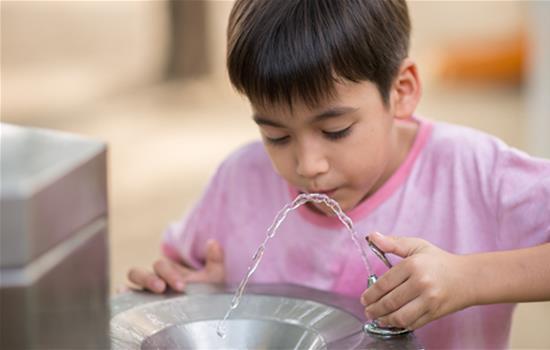Water Facts
Did you know?
The amount of water on Earth hasn’t changed since the planet was formed two billion years ago. The water that comes from your faucet could contain molecules that dinosaurs and Neanderthals drank.
Explore the water facts below to learn more about this valuable resource!

- Approximately 97% of the water on Earth is salt water. Only 3% is fresh water. Of that 3%, most is frozen in the polar caps of Antarctica. The remaining 1% is found in lakes, reservoirs, rivers, streams, and beneath the ground. Click here to see how much water exists on, in and above our planet: https://www.usgs.gov/special-topic/water-science-school/science/how-much-water-there-earth?qt-science_center_objects=0#qt-science_center_objects
- If all of the world's water were fit into a gallon jug, the fresh water available for us to use would equal only about one tablespoon.
- Water is the only substance that is found naturally on Earth in three forms: liquid, gas, and solid.
- Water moves around the Earth in a water cycle. In one century, the average water molecule spends 98 years in the ocean, 20 months as ice, about two weeks in lakes and rivers, and less than a week in the atmosphere. Much of the Earth’s water remains locked in glaciers and polar ice for thousands of years.
- The water cycle has five parts: evaporation, condensation, precipitation, infiltration, and surface run-off. Each day the sun evaporates a trillion tons of water.
- Water regulates the Earth's temperature.
- If water changes phase its physical appearance changes due to the parting or joining of the water molecules. In the solid phase, ice, the water molecules are close together. In the gaseous phase, steam, they are the furthest apart.
- Frozen water is 9% lighter than liquid water, which is why ice floats. If water were like most other substances, ice would sink and the Earth would be a cold, dry and hostile planet, with thick layers of ice at the bottom of frigid oceans, lakes, and rivers.
- Approximately 66% of the human body consists of water. The human brain is approximately 75% water, and human blood is 83% water.
- A single tree will move 70 gallons of water per day from the ground into the atmosphere.
- A person can live about a month without food, but only about a week without water. A person must consume about two quarts of water daily to live healthily. Much of that water will come from the foods we eat. Tomatoes, for example, are more than 90% water.
- Just as it does with the Earth, water regulates the temperature of the human body. If you have a fever you should drink lots of water to make up for the water you lose through evaporation.
- More than two billion people on Earth do not have a safe supply of water. At least 400 million people live in regions with severe water shortages.
- In most American cities and towns, tap water is treated so that people don't get sick with diseases such as cholera and typhoid, which are caused by bacteria, viruses, or parasites found naturally in the water.
- An estimated 1,800 children under the age of five die each day as a result of illnesses contracted by use of impure water, sanitation and hygiene.
- Today, drinking water in the U.S. must meet more than one hundred compounds that are important to public health.
- To determine water quality, government-certified agencies take samples that are tested in a laboratory to determine if they meet water quality standards. In a typical year, Aquarion takes more than 10,000 water samples from its supplies and performs more than 114,000 quality tests on them to assure that our water continues to meet or exceed state and federal standards.
- Humans use more and more water each year. Americans use an estimated 88 gallons of water per person per day, which is about 50 gallons more than the amount of water used daily by Europeans
- It takes 50 gallons of water to produce one egg.
- It takes an average of 468 gallons of water to refine one barrel of crude oil.
- Manufacturing a new car requires between 12,737 to 21,926 gallons of water.
- In the home, three-quarters of the water used is used in the bathroom, and almost all of the water used goes down the drain. Old-style toilets, unlike many new models, waste thousands of gallons each year.
- Another way to save water is to keep a bottle of cold water in the fridge. You’ll avoid running the tap until the water is cold.
- Still another way to save is to turn the tap off while you brush your teeth.
- Even one small drip in a faucet can add up to hundreds of gallons of water wasted each year. The good news is, most leaky faucets are easy to fix. Click here to calculate the amount of water wasted, and the amount you can save by repairing a leak: https://water.usgs.gov/edu/activity-drip.html
- Bottled water can be up to 1,000 times more expensive than water from the tap and much of it is tap water.
- The average American spends less than 1% of his or her total personal expenditure dollars for water, wastewater, and water disposal services.
